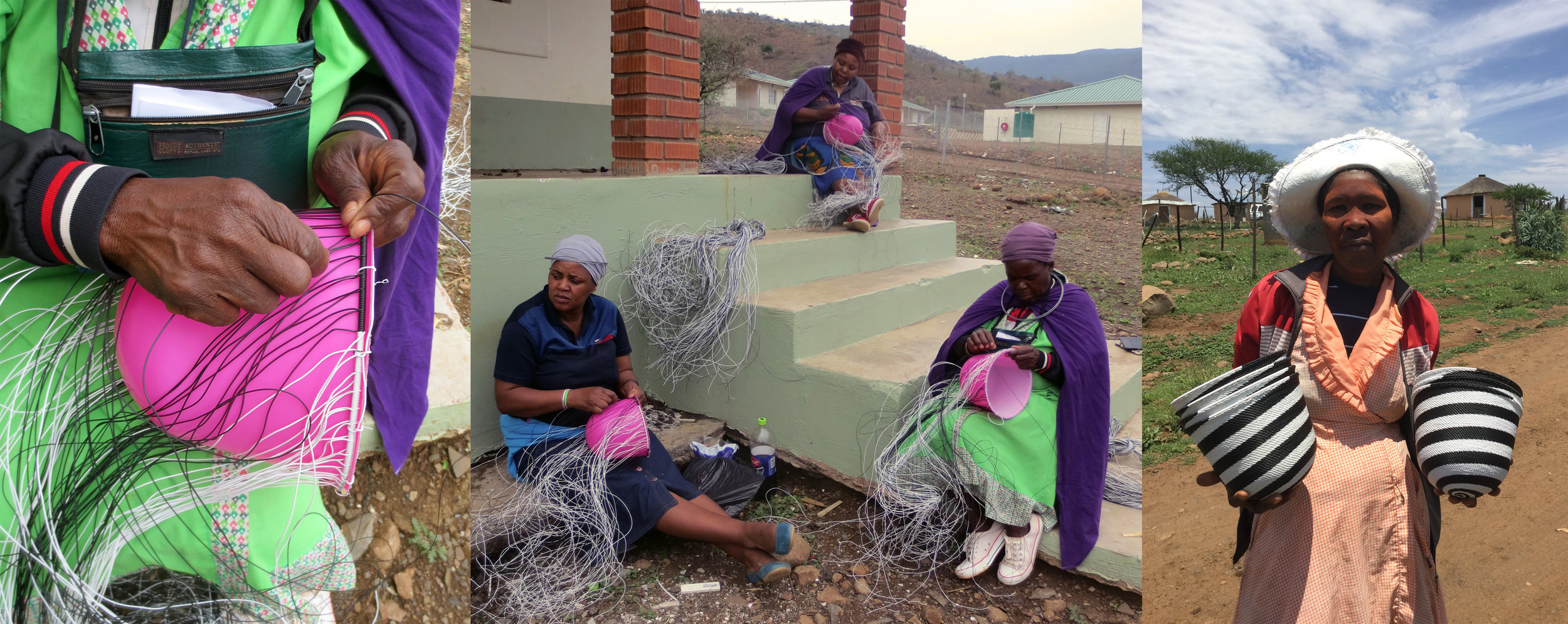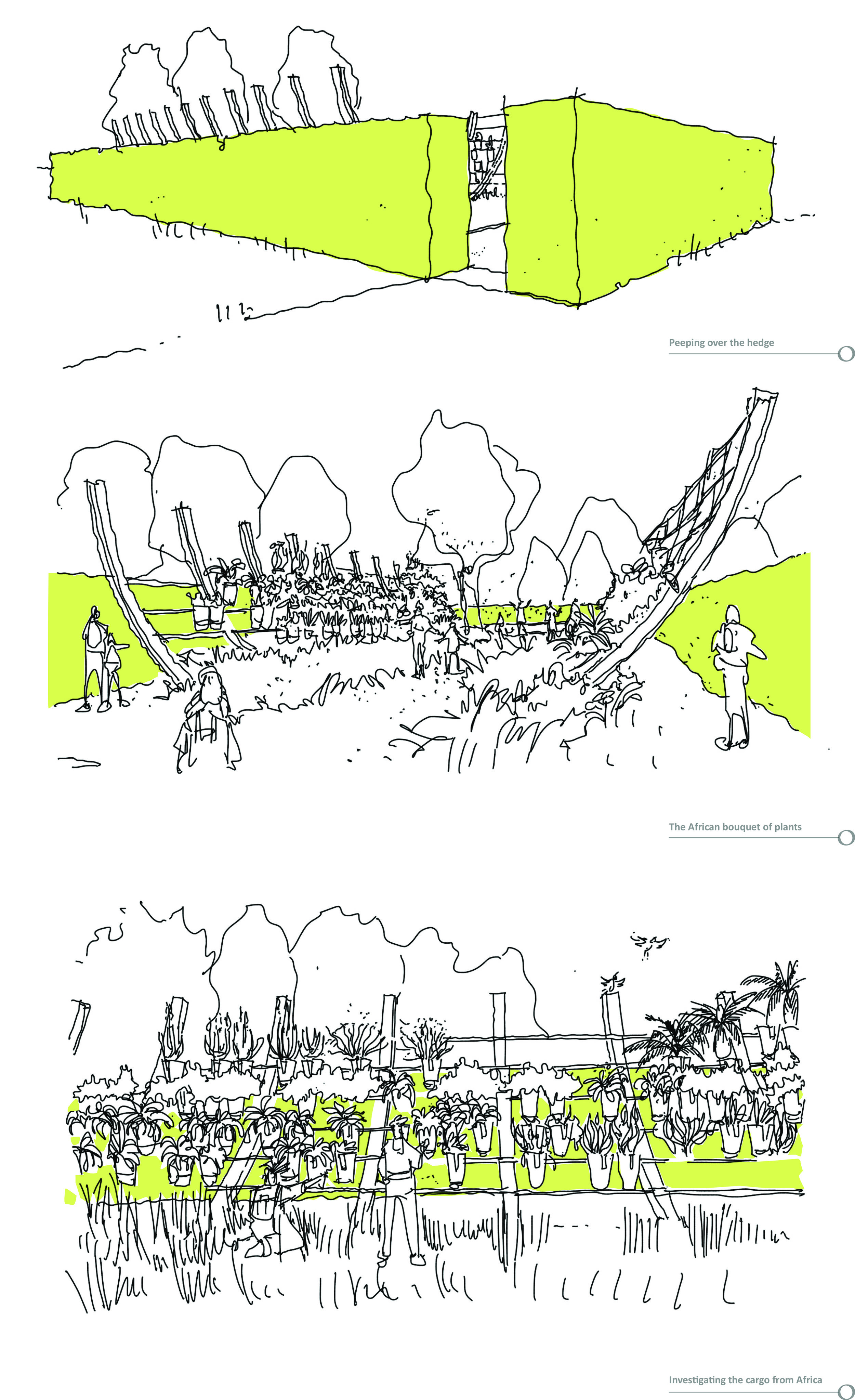
African Cabinet Garden
Gardens of the World Exhibition, IGA, Berlin, Germany | 2017
The South African garden at the Gardens of the World exhibition is based on the concept of a landscape’s ability to transcend human-made boundaries.
The project design consists of three components: the hull, steel pots and the planting. The exterior constraints of the garden is framed with hedges of European Hornbeam shrubs. The pavilion floor is sloped to create a continuum of movement: up towards a viewing platform and back down to the garden entrance.
The skeletal ship’s hull is an imposition onto the site and serves as a testimonial to man’s propensity towards control and possession. Its steel ribs are a metaphor of a slave ship that has beached and washed ashore. It carries with it the memory of human slaves as cargo, which use to be a commonplace exchange between Africa and Europe. Today the ship’s hull houses a precious cargo of African flora.
Steel pots are fixed to the inside of the ribs and contain vegetation from the African continent. Plant species that are cultivated in Europe, but originate from Africa, were selected as a device to communicate a transition of boundaries. Planting in the garden follows a binary strategy that uses native European vegetation on the floor plane and mimics coastal vegetation and relates back to the metaphor the beached vessel.
The experience encourages the visitor to contemplate the meanings associated with the metaphor of a slave ship, not as a tool for control and possession, but rather as a mechanism for inclusion and freedom.
Documentation & supervision by k1 Landschaftsarchitekten, Germany






The 220 vessels that house the plants comprise of two elements: a stainless steel & copper cuff and a woven wire basket.

The steel & copper portion was manufactured in Germany.

The wire-work was handcrafted by African artisans from KwaZulu Natal in South Africa




